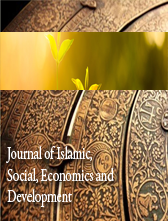INVESTIGATING CREATIVE PROBLEM-SOLVING IN LEARNING MATHEMATICS THROUGH CYCLICAL ACTION RESEARCH
Abstract
Creativity is an essential ingredient for the development of a nation furthermore creative problem-solving skill is crucial in this challenging world. Creative ways of solving problems should be a fundamental part of mathematical teaching and learning. Due to its significance, the main objective of this research is to study the effects of Form 1 students' mathematical performance after the implementation of teaching through creative problem-solving (CPS) approaches. The other objective is to examine the level of creative problem-solving ability of the participants during the interventions. A class of Form 1 students from Gombak, Selangor, was selected using purposive sampling for this cyclical action research (CAR) design study. Before and after going through the three cycles of the interventions, all the students were assessed using mathematics items (pre-test and post-test). During the interventions, the students were observed using an observation creativity checklist (quantitative approach) and semi-structured observation (qualitative approach). However, this article will only present the findings based on the observation checklist. The results on mathematics items showed that 50% of the participants had improved after the interventions, and the Average Mean Score for all students increased by 27%. The male participants improved better (89%) in mathematics item tests than the female participants (23%). Meanwhile, the results from the observation checklist showed that the average mean scores in all 4 components of creativity (Originality, Elaboration, Fluency and Flexibility) showed an increasing trend from moderate to high levels. The mean scores are as follows; M=3.07 (SD=0.64), M=3.14 (SD=0.77) and M=3.69 (SD=0.77) for Cycle 1, Cycle 2, and Cycle 3, respectively.













